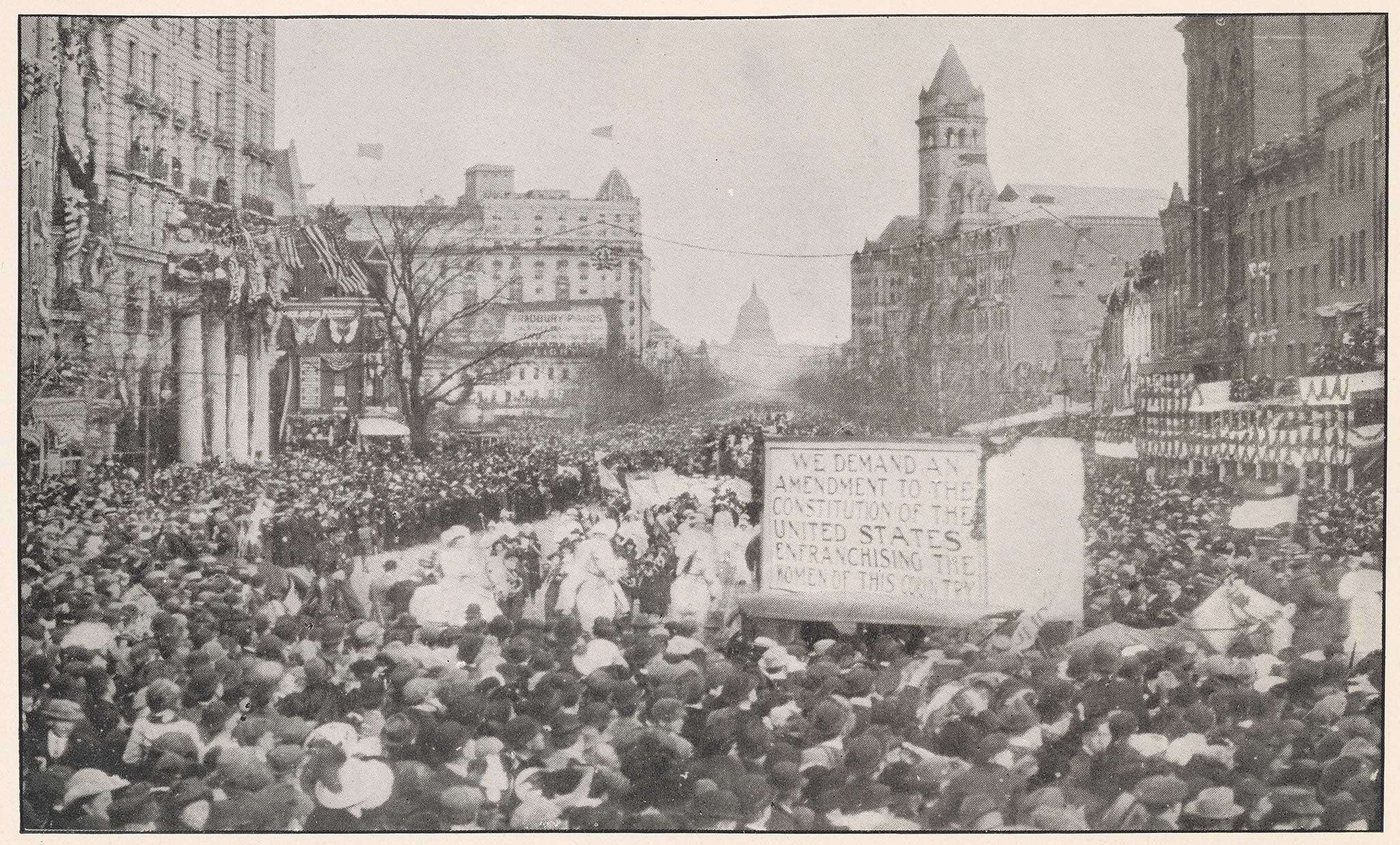Woman Suffrage Parade in Washington, DC
3/3/1913
Add to Favorites:
Add all page(s) of this document to activity:

This is Exhibit No. 7, one of dozens of photos collected as evidence by a congressional committee investigating claims from the 1913 women’s voting rights march in Washington, D.C.
On March 3, 1913, woman suffrage advocates marched along Pennsylvania Avenue in Washington, DC. Organizers had made repeated attempts to secure police protection in preparation for the parade — they even contacted the Secretary of War seeking assistance from the U.S. military. Richard H. Sylvester, Chief of DC Police, had assured organizers that he could manage the situation without the military, but he ultimately failed to control the crowd.
Poor treatment of the marchers sparked immediate outrage. The day after the parade, the Senate passed a resolution authorizing the Committee on the District of Columbia to investigate the police’s handling of the incident. The committee collected evidence and heard from over 100 witnesses, including parade organizer and suffragist Alice Paul; Julia Lathrop, chief of the Children’s Bureau; parade attendees from around the country; and witnesses who spoke on behalf of the Metropolitan Police.
The women testified about their experiences—some noted the lack of police or their indifference and applauded the Boy Scouts for being more effective than the police. Others described drunken men along the parade route hooting and jeering at them, blocking their path, and making insulting remarks.
The committee determined that the marchers had not been protected; and ultimately the DC Superintendent of Police was removed.
On March 3, 1913, woman suffrage advocates marched along Pennsylvania Avenue in Washington, DC. Organizers had made repeated attempts to secure police protection in preparation for the parade — they even contacted the Secretary of War seeking assistance from the U.S. military. Richard H. Sylvester, Chief of DC Police, had assured organizers that he could manage the situation without the military, but he ultimately failed to control the crowd.
Poor treatment of the marchers sparked immediate outrage. The day after the parade, the Senate passed a resolution authorizing the Committee on the District of Columbia to investigate the police’s handling of the incident. The committee collected evidence and heard from over 100 witnesses, including parade organizer and suffragist Alice Paul; Julia Lathrop, chief of the Children’s Bureau; parade attendees from around the country; and witnesses who spoke on behalf of the Metropolitan Police.
The women testified about their experiences—some noted the lack of police or their indifference and applauded the Boy Scouts for being more effective than the police. Others described drunken men along the parade route hooting and jeering at them, blocking their path, and making insulting remarks.
The committee determined that the marchers had not been protected; and ultimately the DC Superintendent of Police was removed.
This primary source comes from the Publications of the U.S. Government.
Full Citation: Woman Suffrage Parade in Washington, DC; 3/3/1913; (Y4.D63/2:W84); Government Publications, 1861 - 1992; Publications of the U.S. Government, Record Group 287; National Archives Building, Washington, DC. [Online Version, https://docsteach.org/documents/document/suffrage-parade-dc, April 26, 2024]Rights: Public Domain, Free of Known Copyright Restrictions. Learn more on our privacy and legal page.



